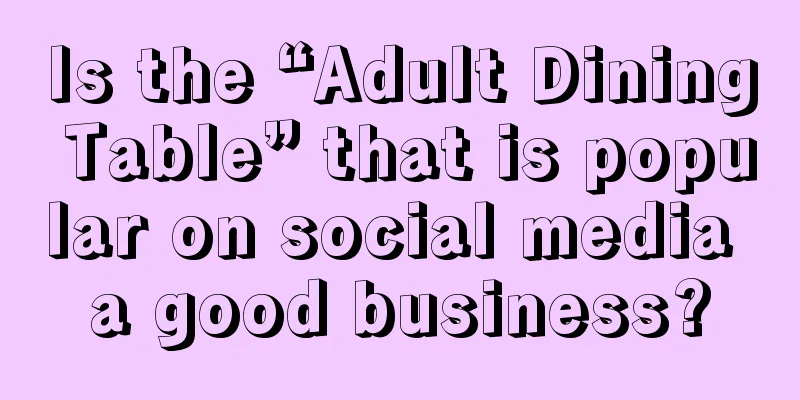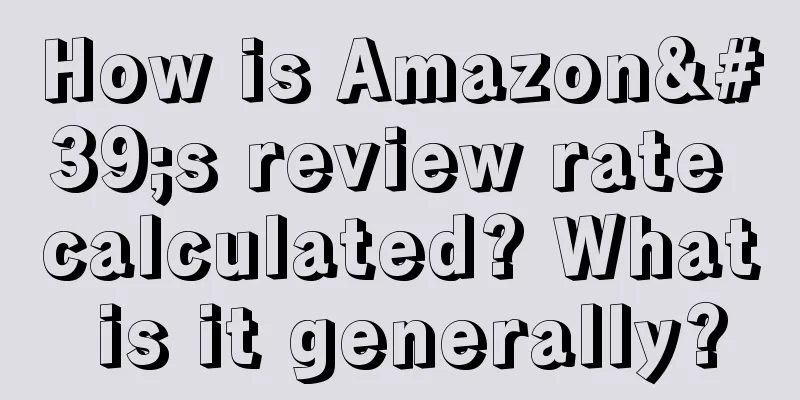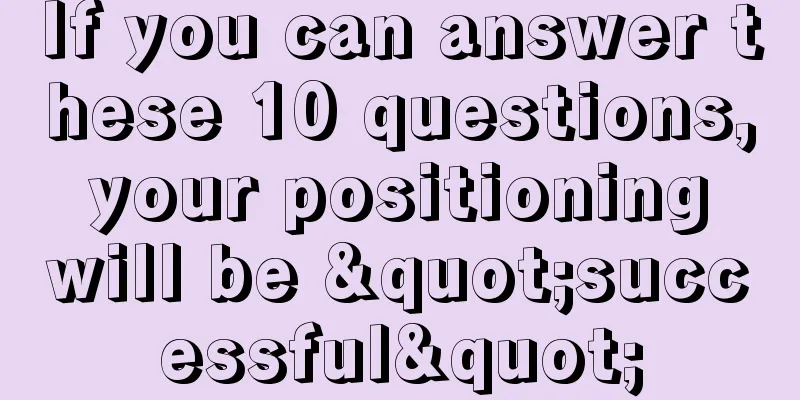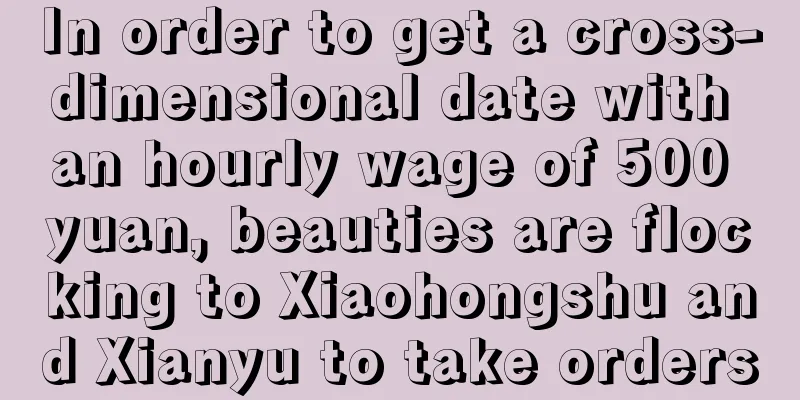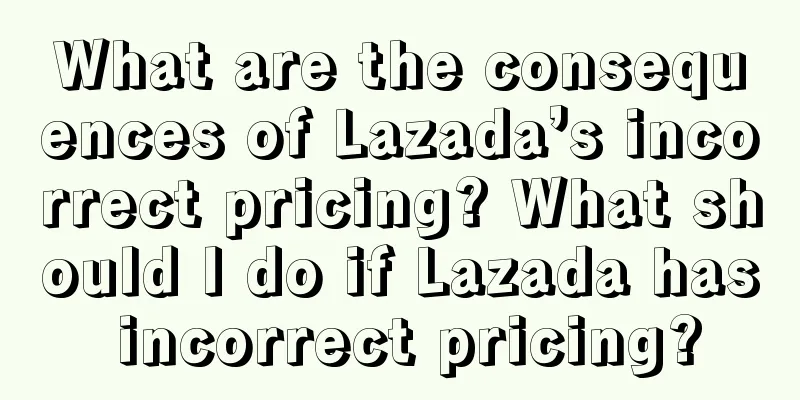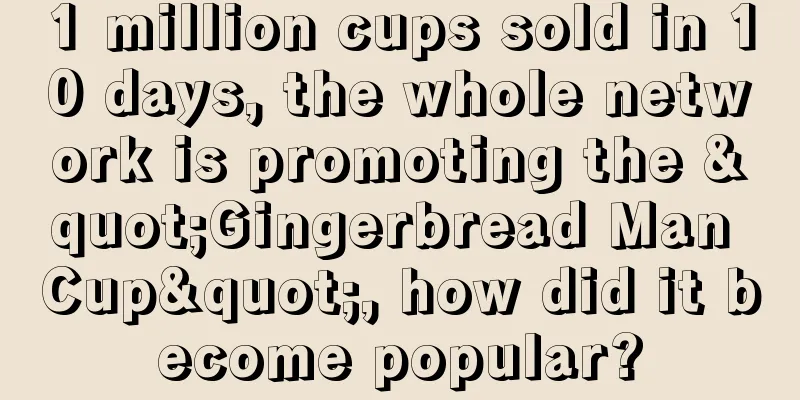Poor-quality children's books, high-priced paper books, boycotting e-commerce, why do booksellers only "hate" JD.com?
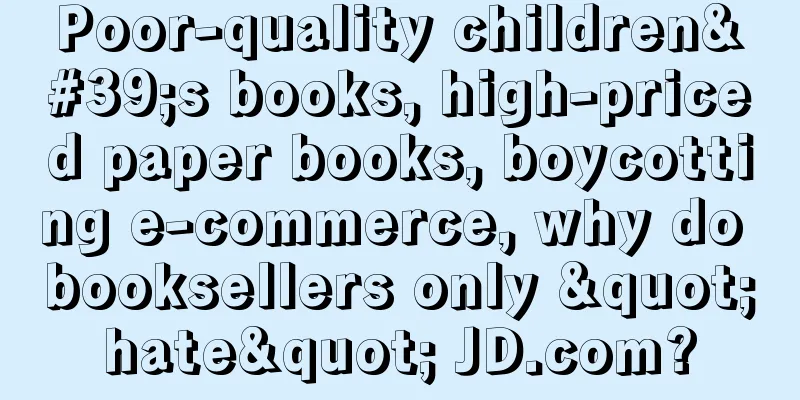
Publishers no longer want to supply books to JD.com. Following the joint boycott of JD.com's 618 promotion by 58 publishers in Beijing and Shanghai, on May 31, Shen Haobo, the founder of Motie Books, announced on social media that Motie Books had completely stopped shipping to JD.com. According to people familiar with the matter, several other publishers have also issued out-of-stock and suspension warnings to JD.com. This is not the first time that the publishing industry has boycotted JD.com, nor is it the first time that it has issued a warning of out-of-stock. As early as the end of 2010, JD.com, Dangdang.com, and Joyo Amazon launched a book price war, reducing the lowest price by another 20%, causing many publishing houses to directly cut off JD.com's supply channels. Half a year later, JD.com once again launched a "40% discount on all children's books" promotion. Faced with a lawyer's letter warning from 24 children's publishing institutions, Liu Qiangdong turned his spearhead toward the publishing institutions, saying "Books can be bought at 30% off, and 10% profit is enough", implying that the publishing institutions are blinded by profit. At the same time, he announced that JD.com's books will always be 40% off, standing on the high ground of public opinion. Subsequently, the publishing industry collapsed across the board, and major e-commerce platforms followed JD.com's lead. The prices of books on e-commerce platforms were reduced across all categories, from 50% off to 40%, 39% off, 28% off... in just a few years... As a result, the book market has gradually formed a distorted market where book sellers exchange low discounts for traffic, and book buyers "will not buy books at a discount higher than 50% off". This year's JD 618, the contradiction between publishers and e-commerce platforms has intensified. On May 17, the Commercial Press, People's Literature Publishing House, Shanghai Publishing House Management Association, and 10 publishing institutions in Beijing, a total of 58 units, issued a notice letter, refusing to participate in JD 618's 29% and 30% discount promotion for all types of books. So far, many publishing institutions have issued out-of-stock and suspension warnings, and are determined to get an explanation. Can the collective boycott of the publishing industry break through this time? We learned from many publishers that the publishing industry, which is deeply trapped in the vicious cycle of low discounts, has no way out. "This is not an uprising forced by force, but a self-salvation of the entire industry that has to face reality." The following is a true story from people working in the publishing industry: 1. “Life and Death Discount” wakes up those who pretend to be asleep"Over the past decade, the publishing industry has been making continuous concessions to e-commerce platforms. The platforms set pricing and profits, and we exchange them for a certain market size." He Fang, a senior publisher who has worked in management at several leading publishing houses, came to this conclusion. Since e-commerce platforms began to enter the book field in 2011, the book retail market's sales value (a term used by the book publishing and distribution department to refer to the total price of all books) has rapidly increased from 40 billion yuan to over 100 billion yuan in 2019, maintaining an annual growth rate of 10% for five consecutive years. This undoubtedly means that e-commerce platforms have brought a considerable new customer base to the publishing industry. He Fang remembers that in order to retain traffic, publishers treated e-commerce platforms differently when they first got involved. "In the past, the wholesale price of books for traditional bookstores was 40% off, but it was reduced to 50% for e-commerce." It seems that publishers have been attracted to e-commerce platforms since the beginning. Subsequently, wholesale discounts on e-commerce platforms dropped from 50% to 40%, 35%, and even to 30% during short-term promotions. "30% discount is basically below the cost line, and every book sold is a loss." In order to gain both traffic from e-commerce platforms and profit margins, publishers have to adjust their original book pricing methods. They reverse the wholesale discount from the actual selling price on the e-commerce platform, add the profit margin, and arrive at the final price printed on the back cover of the book. He Fang said, "The book could have been priced at 30 yuan, but because it has to be sold at a 40% discount on the e-commerce platform, the price has to be raised to 50 yuan." The clearly marked price has become part of the discount play, and readers have complained. Publishers are like frogs in warm water. Under the traffic thinking of e-commerce platforms, they gradually give up their pricing power, which has evolved into a deformed market where all sales have discounts, and finally the prices written in black and white are replaced by the platform prices. Chen Kexi, who has worked in publishing and distribution for 13 years, said that in this environment, book distribution can be described as a "Infernal Affairs" between buyers and sellers. Distributors have become "price coordinators" who keep a close eye on various e-commerce platforms every day. "If any one of them lowers the price and breaks the price balance, it will be troublesome. We have to communicate with the platform repeatedly to adjust it back, otherwise all platforms will lower the price. If you go to them, they will say that so-and-so hasn't adjusted it back yet. If they don't adjust it, we will also lower it." At the most intense time, the platform lowered the price at 11pm when Chen Kexi got off work, and restored it to normal at 8am the next day. "Other platforms came to me to argue, but when I checked, they didn't lower the price. They are playing 'Infernal Affairs'." Why would publishers like Chen Kexi, who are in a passive situation after losing their pricing power, not be tolerant this time? He Fang analyzed that the reason behind the collective counterattack might be that they could no longer tolerate the lack of business rules in JD.com and the red line of life and death discounts that affected the entire industry. Figure | Trend chart of the total scale of China's book retail market – Source: Kaijuan Data "In the past few years, the 618 promotions were basically based on the selling price plus a discount on the full amount. But this year, the selling price is first 50% off, which is already 60%-70% off the list price. On this basis, another 50% discount is given, and then the discount on the full amount is added." He Fang gave an example, saying that during previous promotions, the final discount for a book after a discount was only as low as 40%, but this time it directly fell below 30%. This can also be seen from the "guaranteed 29% or 30% discount" plan that JD.com sent to publishers before the big sale. "Why does JD.com guarantee 29% or 30% discounts for publishers? It's because this time the publishers' discounts will be reduced to less than 30%." He Fang also said that 30% off is the life and death line for profits in the industry. Before deducting fixed costs such as staff rent, the profit is already negative. "It is an unprecedentedly low discount." Interestingly, before JD.com’s Double 11 promotion in 2023, the head of JD.com’s book business said in an interview with China Publishing and Media Business Daily, “JD.com Books pays full attention to monitoring the price trends of books in various channels. Once malicious pricing behavior is discovered, JD.com Books will continue to follow up.” He also stated that “it will not actively break prices.” Figure | Illustration of discounts at the main venue of JD.com’s 618 book promotion this year After more than half a year, JD.com has become the price breaker in its own words. In He Fang's view, this also reflects the dilemma of book e-commerce platforms in the past two or three years - the low-price advantage is no longer there. Affected by the overall environment, the publishing industry has gradually entered the field of live streaming and established direct sales channels for books. According to Kaijuan data, book sales through short video e-commerce channels showed an upward trend in the first quarter of 2024, with a year-on-year increase of 31.15%, while platform e-commerce decreased by 10.31%. "The popularity of short video live streaming will inevitably attract more low-priced resources to enter and divide the traffic of traditional e-commerce platforms." He Fang estimated that the current revenue share of self-operated channels of leading publishing houses may reach 15-20%. E-commerce platforms still account for the majority, but JD.com, as one of them, may only account for 10%-15% of the total revenue. "Even if they don't sell on JD.com, they can make up for the shortfall through other means." Figure| Statement from People's Literature Publishing House In other words, the publishing industry has found a new traffic fulcrum, and no longer has to pretend to be a lowly person, and has the confidence to take back the pricing power that has been gradually transferred. However, JD.com, which is out of touch with the status quo, is still suppressing book discounts offline, trying to use the publishing industry to gain traffic. So this time, JD.com hit a steel plate. Not only did it fail to grasp the publishing industry, it may also lose this trump card for attracting traffic. 2. If we don’t resist e-commerce, the “tragedy of children’s books” is also the future of children’s booksTian Ye, who has worked as a book planner in Shanghai for 10 years, has not dared to touch children's books in the past two years. "Last year, someone approached me to collaborate on a set of children's books. After comparing prices online, they came up with a price, which I saw was not even as high as my cost." Coincidentally, He Fang also mentioned the strange phenomenon in the children's book market in recent years - children's books priced at 9.9 yuan per copy on short video platforms have become hot sellers. The situation is even more extreme on the children's book bestseller list of a well-known short video platform. A set of 4 children's books with more than 100,000 copies sold is priced at 22.9 yuan, including shipping, with an average of less than 6 yuan per book, full-color printing technology, and 16-page large format (similar to A4 paper size). On e-commerce platforms, a set of 4 full-color 16-page children's books with the same theme costs about 100 yuan, or about 25 yuan per book on average. The price of one book can buy a whole set, and products with good quality and low prices are easy to be favored by consumers. It is not surprising that children's books on short video platforms are popular. Figure|Product page of children's books for sale on a short video platform Just because a children's book is cheap may not necessarily be of good quality. According to a report by the Beijing Youth Daily in January this year, the China Book and Periodical Publishing Industry Association found in a survey on the quality of children's book content that children's books on the market are generally of poor quality, especially low-priced discount books. Due to cost compression, publishing organizations outsource production, and the outsourcing is further outsourced, resulting in the final producers not seriously understanding the content, or just doing it to get by, and the chaos of pictures not matching the text often occurs. Tian Ye is deeply touched by this. Not long ago, her husband bought a set of such low-priced books for their children from a short video platform. Tian Ye calls it a low-value follow-up book. "I opened it and saw that a basic Cinderella story was compressed and distorted. It was very different from the original story, and there were grammatical errors, incoherence, and logical structure problems. It was unbearable for professionals to read." Tian Ye asked her husband why he bought such a shoddy book, and her husband just said that other parents were buying it and it was very popular. "This is one of the reasons why low-priced children's books are so popular. Parents only look at sales and buy them following the trend, but rarely pay attention to the content. This is also a feature of the children's book market. Buyers don't read the books, and children can't distinguish between good and bad, so objective market feedback cannot be formed." Figure|Comments from buyers on the children's book review page on a short video platform He Fang also said that the content quality of children's books has dropped precipitously. "In the past, it took a year or even several years to polish the content and details of a children's book. Each illustration would cost 2,000 yuan, but now even 100 yuan is a high price, and a set of books can be made in a month. Similarly, the texture and safety of paper and ink used to be very important, but now they are sold for a few yuan a copy, so it is not affordable. So there have been no representative good books published in recent years." She added that the prevalence of copycat books has also led to more and more regular publishers shrinking or withdrawing from the children's book market. "The industry is almost destroyed." Ever since JD.com announced a 40% discount on children’s books in 2011, the children’s book industry has been stuck in the quagmire of low discounts and has never gotten back on its feet. In recent years, copycat books have blatantly copied ideas and themes. The short and fast production cycle allows them to publish children's books faster, in larger quantities, and at greater price advantages than regular publishing houses, completely taking away the last bit of profit margin in the children's book market. She gave the example of a leading domestic publishing house whose children's book business has an annual revenue of 500 million yuan, but only 2-3% profit. "In the end, they probably made more than 10 million yuan, but this is a team of nearly 200 people. If you do the math, you will know that in Beijing, this 10 million yuan is not enough to pay the wages of the entire team. Not only did they not make any profit, they even lost money." He Fang said that there is no commercial space for children's books anymore. Book buyers only pick low-priced books at 9.9 yuan per copy. Book sellers will suffer huge losses if they sell books in this way. However, book buyers still blame the booksellers for being blinded by profit and setting inflated prices. Only books that follow the trend can profit from this. When copycat books no longer have any creative ideas to copy, "the market for children's books will basically be dead." He Fang said that if publishers do not wake up and allow low-discount and copycat books to flood the market, children's books will serve as a lesson for us. 3. Can e-commerce, which sucks blood from booksellers, only rely on the low-price model?When talking about the 9.9 yuan copycat books, Ning Yuan, who has been engaged in book planning for 15 years, has a different opinion. "Once I was taking a taxi and the driver started chatting with me. He said that he recently bought a book for 9.9 yuan on a short video platform and was reading it. I thought that was great." In Ning Yuan's view, if reading is better than watching short videos, it is because it can relieve the dormant state of rational thinking caused by watching too many short videos and help the brain restore its thinking ability. So even if the book is full of correct nonsense, Ning Yuan still thinks that reading a follow-up book is better than not reading it at all. Entertainment methods are becoming more and more attractive, and fewer and fewer people are willing to read. In Ning Yuan's opinion, this is also one of the reasons why the book market is shrinking and discounts are becoming more and more severe. In addition, Tian Ye believes that this situation is also caused by people’s poor understanding of the publishing industry. "I found that many people have two sets of logic when buying books and reading books. When reading books, people can realize that this commodity has cultural value, but when buying books, they forget the commodity attributes of books." Tian Ye gave an example. Every time she published a new book and promoted it on WeChat Moments, someone would always ask her for free books. "They would ask for 8 or 10 books at a time." This phenomenon is not uncommon, and it is also often encountered by colleagues. Tian Ye was puzzled, "If his friend opened a milk tea shop, would he also ask for 10 or 8 cups of free milk tea?" In Tian Ye's opinion, it is easy for the public to overlook that books are commodities produced through industrial processes. In addition, books have natural creative attributes that cannot be completely replaced by efficient assembly lines. The production cost and cycle are bound to be different from those of conventional commodities. "If a book that takes half a year to a year to make sells for about the same as a cup of milk tea that only takes a few minutes to make, then it is an inevitable choice for book makers to switch to making milk tea." Publishers have long realized that breaking the low-discount curse of the book industry cannot escape the formation of a reading habit among the people. Chen Kexi said that in fact, in the past two years, some publishers have tried to solve this problem with lightweight reading. For example, the "Qingdu Library" brand promotes the concept of "small format, easy reading". Each book has an average of less than 200 pages, weighs only half a pound, and is priced at around 30 yuan. From the product to the reading experience, it is moving towards "lightweight". Chen Kexi said that in the past few years, hardcover and heavy public domain books were popular on the market. "They are very big and thick books with contents of humanities, history and social sciences. They look very serious. This kind of book can easily keep readers away. Most people buy it just for the soft cover." On the contrary, it was the books from "Qingdu Library" that she read recently in a bookstore that helped her regain the relaxing feeling of reading. "I finished reading it in about 2-3 hours in the bookstore. It was a smooth process and gave me a great sense of accomplishment. It is also very small and can fit in my coat pocket. I can read it with one hand just like taking out my phone from my pocket. The movements are very simple." In Tian Ye's view, the concept of "light reading" is actually an attempt to adjust book pricing. "The smaller the size of books, the lower the threshold for reading. Lower pricing abandons the previous discount promotion model and returns to a healthy ecology where pricing is the selling price. Buying books does not require price comparison and has become a very easy thing." It is also an opportunity for the publishing industry to reshape its pricing system. Figure|Light reading books that focus on "small size, easy to read" If we can offer readers the low prices they like without compromising content and quality, we can achieve a win-win situation for both publishers and readers. He Fang hopes that one day in the future, low prices and low discounts will no longer be the biggest motivation for readers to buy books. Reading will return to its own needs. Books will no longer be tied to prices, and pricing will return to a reasonable range. "For example, if I want to read Yu Hua's books, even if other books are only sold for 1 yuan and the book I want is not discounted, I will not make impulse purchases. Of course, the premise is that I have a clear reading need first." This is just like what Ning Yuan said, even reading a follow-up book is better than not reading it. As long as more and more people return to reading, there is always hope that this market will get back on track. Author: Duan Ran; Editor: Wan Fang; Source public account: Microscope Story (ID: 1092858) |
<<: How can a restaurant provide good service?
>>: How do the “former bloggers” who are flooding the social media platforms make money?
Recommend
Big anchors are losing the low-price machete|Juchao
Big anchors used to use the "lowest price on ...
Entering the 1 billion club in 4 years, Fang Li’s transformation of TikTok
Domestic beauty brand Fangli achieved a sales leap...
How to reduce Amazon return rate? What are the methods?
In online sales, handling returns is an important ...
Can I withdraw my funds if Amazon KYC audit fails? How to file a KYC appeal?
Each e-commerce platform has its own regulations. ...
Several core essences of Xiaohongshu's popular article notes
There is a core essence behind the popular notes o...
How long is the settlement cycle for ordinary Amazon sellers? What are the rates for each payment method?
No matter which payment method Amazon sellers use,...
The “Poor Man’s Meal” is selling well. Are merchants making a profit or a loss?
Why can the "poor man's meal" enter ...
How is the salary at shein? Where is shein?
As a popular fashion e-commerce brand among young ...
@郭有才 starts live streaming to sell goods, can he return to the peak?
Recently, Guo Youcai has returned to the public ey...
What does Amazon's Pan-European program mean and what does it do?
Now many friends will try to open a store on Amazo...
Writing articles is a dead end, but pushing posts can earn you 100,000 a month?
A different way to get rich - tweeting videos, beh...
Can Amazon change the price during its 7-day flash sale? How long does it take to register a flash sale for a new product on Amazon?
As one of the world's largest online shopping ...
A single video received over 2 million likes, amateur transformation is still the secret to traffic
The Douyin June fan growth list is out, and this t...
Practical sharing of video account operation
How can a video account be operated to make money?...
Does it cost money to open a cross-border e-commerce store? What kind of money is needed?
The information, qualifications and fees required ...
